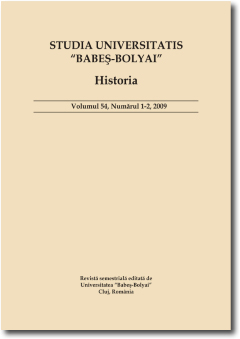THE SELF: RELIGIOUS AND NOBLE IDENTITY IN LATE MEDIEVAL TRANSYLVANIA
THE SELF: RELIGIOUS AND NOBLE IDENTITY IN LATE MEDIEVAL TRANSYLVANIA
Author(s): Anca GogâltanSubject(s): History
Published by: Studia Universitatis Babes-Bolyai
Keywords: Transylvania; family church; Vir Dolorum; donors; representation of the self.
Summary/Abstract: This analysis focuses on an early fifteenth century cycle of wall paintings from a small church in Transylvania. This belonged to a Hungarian family of nobles called Apafi. They were members of the lesser nobility meaning that they were not very rich but were well connected to elite members of the Hungarian kingdom. The goal of this article is to study a peculiar composition situated in the lower area of the sanctuary on each side of an image of Christ Vir Dolorum. This row of frescoes includes representations of saints as well as several characters that seem to be laymen. Although these figures do not conform to the established patterns of donor representation, they are comparable, at least in message, to self-representations occurring in family churches of members of the higher nobility of the land such as Jolsvai and Drugeth.
Journal: Studia Universitatis Babes-Bolyai - Historia
- Issue Year: 58/2013
- Issue No: Special
- Page Range: 49-77
- Page Count: 29
- Language: English

